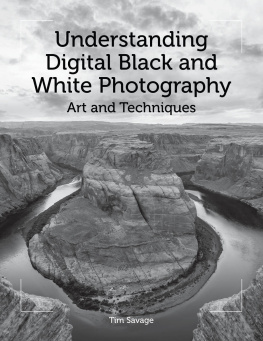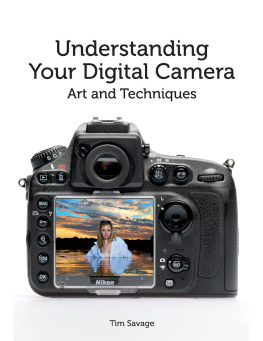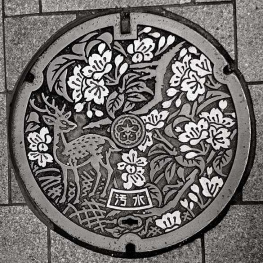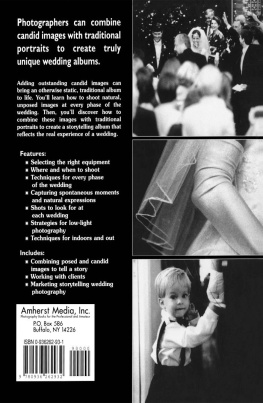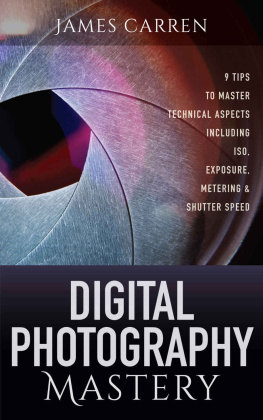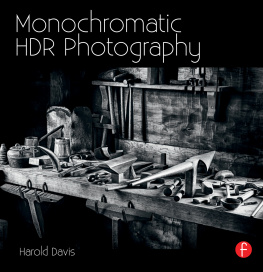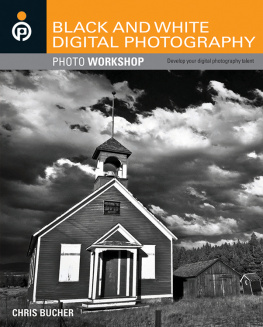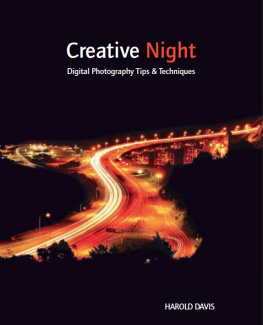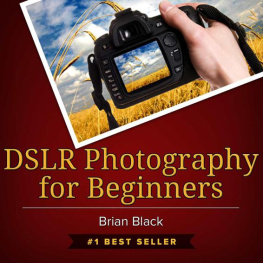Tim Savage - Understanding Digital Black and White Photography : Art and Techniques.
Here you can read online Tim Savage - Understanding Digital Black and White Photography : Art and Techniques. full text of the book (entire story) in english for free. Download pdf and epub, get meaning, cover and reviews about this ebook. City: La Vergne, year: 2016, publisher: Crowood, genre: Home and family. Description of the work, (preface) as well as reviews are available. Best literature library LitArk.com created for fans of good reading and offers a wide selection of genres:
Romance novel
Science fiction
Adventure
Detective
Science
History
Home and family
Prose
Art
Politics
Computer
Non-fiction
Religion
Business
Children
Humor
Choose a favorite category and find really read worthwhile books. Enjoy immersion in the world of imagination, feel the emotions of the characters or learn something new for yourself, make an fascinating discovery.
- Book:Understanding Digital Black and White Photography : Art and Techniques.
- Author:
- Publisher:Crowood
- Genre:
- Year:2016
- City:La Vergne
- Rating:3 / 5
- Favourites:Add to favourites
- Your mark:
- 60
- 1
- 2
- 3
- 4
- 5
Understanding Digital Black and White Photography : Art and Techniques.: summary, description and annotation
We offer to read an annotation, description, summary or preface (depends on what the author of the book "Understanding Digital Black and White Photography : Art and Techniques." wrote himself). If you haven't found the necessary information about the book — write in the comments, we will try to find it.
Tim Savage: author's other books
Who wrote Understanding Digital Black and White Photography : Art and Techniques.? Find out the surname, the name of the author of the book and a list of all author's works by series.
Understanding Digital Black and White Photography : Art and Techniques. — read online for free the complete book (whole text) full work
Below is the text of the book, divided by pages. System saving the place of the last page read, allows you to conveniently read the book "Understanding Digital Black and White Photography : Art and Techniques." online for free, without having to search again every time where you left off. Put a bookmark, and you can go to the page where you finished reading at any time.
Font size:
Interval:
Bookmark:

Understanding Digital Black
and White Photography
Art and Techniques
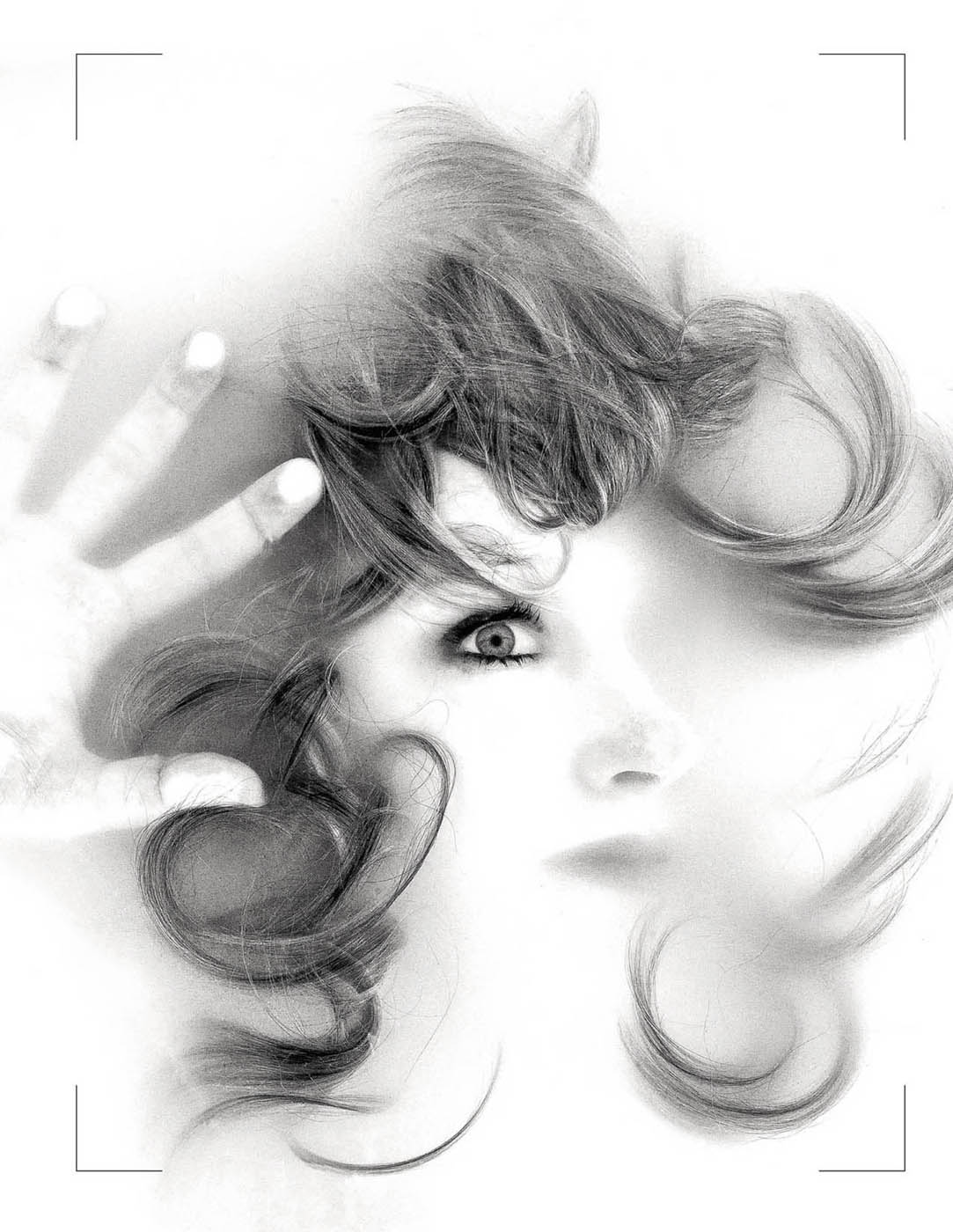
Understanding Digital Black and White Photography
Art and Techniques
Tim Savage

CROWOOD
First published in 2016 by
The Crowood Press Ltd
Ramsbury, Marlborough
Wiltshire SN8 2HR
www.crowood.com
This e-book first published in 2016
Tim Savage 2016
All rights reserved. No part of this publication may be reproduced or transmitted in any form or by any means, electronic or mechanical, including photocopy, recording, or any information storage and retrieval system, without permission in writing from the publishers.
British Library Cataloguing-in-Publication Data
A catalogue record for this book is available from the British Library.
ISBN 978 1 78500 198 7
Acknowledgements
I would like to offer my deepest thanks to each person who has assisted me in the creation of this book. Particular gratitude is due to my colleagues at UCA who have aided me throughout the process of researching, writing and producing the work. Specifically, Tipu Miah and Julie Flude for providing access to specialist equipment, Sarah Jeans for endorsing my research proposal and to Dr Roni Brown and Richard Jones for supporting me to consolidate techniques described in this book to visit and photograph the Grand Canyon while developing a digital zone system methodology.
Gratitude is owed to Beytan Erkman for his assistance with identifying and resolving technical issues and to Roger Buchanan for his diligent proof reading and expertly critiquing the drafts of this book and challenging inaccuracies in advance of publication.
The greatest thanks are due to my wife Kelly-Marie for her patience, posing and critical proof reading. Finally, this book is dedicated to my beautiful children (Rose and Ralph), who inspire me to make new work each day.
Image acknowledgements
The following illustrations are used with kind permission:
: Collaboration between the author and Ewa Lvgren
: Hasselblad, Sony, Canon, Nikon
: Manfrotto
: Hoya Filters
: Apple
: EIZO
: Epson Technologies
: PlusTek Scanners
: Hasselblad
: Ray Flash
: Wacom press office
: Sekonic
: Kodak
: X-Rite
: Color Confidence
: PermaJet
All other photographs copyright retained by the author.
Supported by 
Chapter 1
An Introduction to Digital Black and White Photography
N ot all that long ago black and white was the only option available to photographers. The traditional monochrome workflow is a slow process requiring the selection of film stock, skilled metering, determining shutter speed, aperture and ISO and focusing the lens manually in advance of exposing the film carefully. Variations in chemistry, dilution ratios and temperatures are used to develop the film with due regard for the appearance of highlights, shadows and contrast. The resulting negatives are then printed in a darkened room under red light on to a range of different paper types and finishes. By contrast, digital cameras, computers and printing technologies can appear a great deal simpler, offering a plethora of options by comparison. Today, making black and white photographs is a preference rather than an aesthetic enforced by the recording medium. Despite advances in technology the impact of black and white sometimes becomes lost in the digital world. Images viewed on screen lack physical authenticity while inkjet prints can appear flat, lifeless and dull when compared with the rich deep blacks offered by traditional darkroom printing. This book is written for readers with a passion for monochrome photography and a desire to match and exceed the level of control and quality of what was possible with film using a digital workflow.

This chapter covers:
A guide to reading this book
Why make black and white photographs?
Finding inspiration
Identifying qualities and sources of light
Identifying imaging traits suited to black and white
Portraiture
Documentary photography and photojournalism
Events
Landscapes
Buildings and architecture
Objects and still life
The body and the nude
Snapshots
A GUIDE TO READING THIS BOOK
Before exploring the photographic processes it is helpful to clarify the terminology. The term black and white is well used and most people will be familiar with what is meant by the phrase. However, in the strictest sense very few photographs contain just black and white. In the vast majority of cases images referred to as black and white also contain shades of grey. Black and white images can be also be warmed, cooled, tinted or take on a hue when treated with sepia or selenium effects. A further point to note is that when working digitally, although a black and white image appears devoid of colour, the image is actually constructed of red, green and blue pixel values. The term monochrome (meaning any other colour and white) is a more accurate way to refer to the photography that this book describes.
The chapter sequence has been written to mirror the natural workflow of a photographer and takes a holistic overview, describing the visualization of images, shooting, editing, printing and outputting for a range of outcomes. This begins by encouraging the reader to imagine their own preferred photographic outcomes in advance of shooting and considering how scenes and subjects may be rendered in black and white. The tools and techniques described are transferable and, regardless of whether you specialize in portraiture, landscapes, wildlife, still life, street photography and so on, the general principles can be applied to any subject or genre. Beyond inspiration, visualization and theory, this book considers black and white photography through four distinct sections: production, processing, finishing and output.
PRODUCTION
considers how a black and white photograph exists as data and how tone is recorded and described by the camera using the histogram.
PROCESSING
describe the digital processing stage. Having captured an image the data must be converted from a colour photograph into a range of greys using software. Adobe Lightroom is the hub of the processing workflow, though other specialist applications can be used to fine tune or automate aspects of the processing stages. This stage encourages photographers to identify and develop their own workflows and establish a suitable software sequence to achieve an end goal. Once the general exposure processing and colour to monochrome conversion has been achieved, the finer aspects of image processing such as contrast, sharpening, and noise reduction are explored using black and white examples.
FINISHING
describe finishing tools that allow finer image adjustments. Photoshop is introduced as the primary finishing tool, providing non-destructive technical adjustments in granular detail, using tools such as Levels, Curves as Adjustment Layers, and employing digital techniques to replicate a range of traditional darkroom tools including dodging, burning, simulating film grain, adding a vignette, applying borders and digital toning. To extend tonal range, monochromatic high dynamic range photography is described in the context of increasing the tonal possibilities for a subject or scene that is extended to include a digital interpretation of Ansel Adamss Zone System for black and white photography.
Font size:
Interval:
Bookmark:
Similar books «Understanding Digital Black and White Photography : Art and Techniques.»
Look at similar books to Understanding Digital Black and White Photography : Art and Techniques.. We have selected literature similar in name and meaning in the hope of providing readers with more options to find new, interesting, not yet read works.
Discussion, reviews of the book Understanding Digital Black and White Photography : Art and Techniques. and just readers' own opinions. Leave your comments, write what you think about the work, its meaning or the main characters. Specify what exactly you liked and what you didn't like, and why you think so.

